How Rare is Platinum vs Gold? A Rarity Comparison
Disclaimer: Global Coin is a dealer of precious metal coins and does not provide investment, financial, or legal advice. Any information provided in this content, including market commentary and insights, is for informational purposes only and should not be construed...
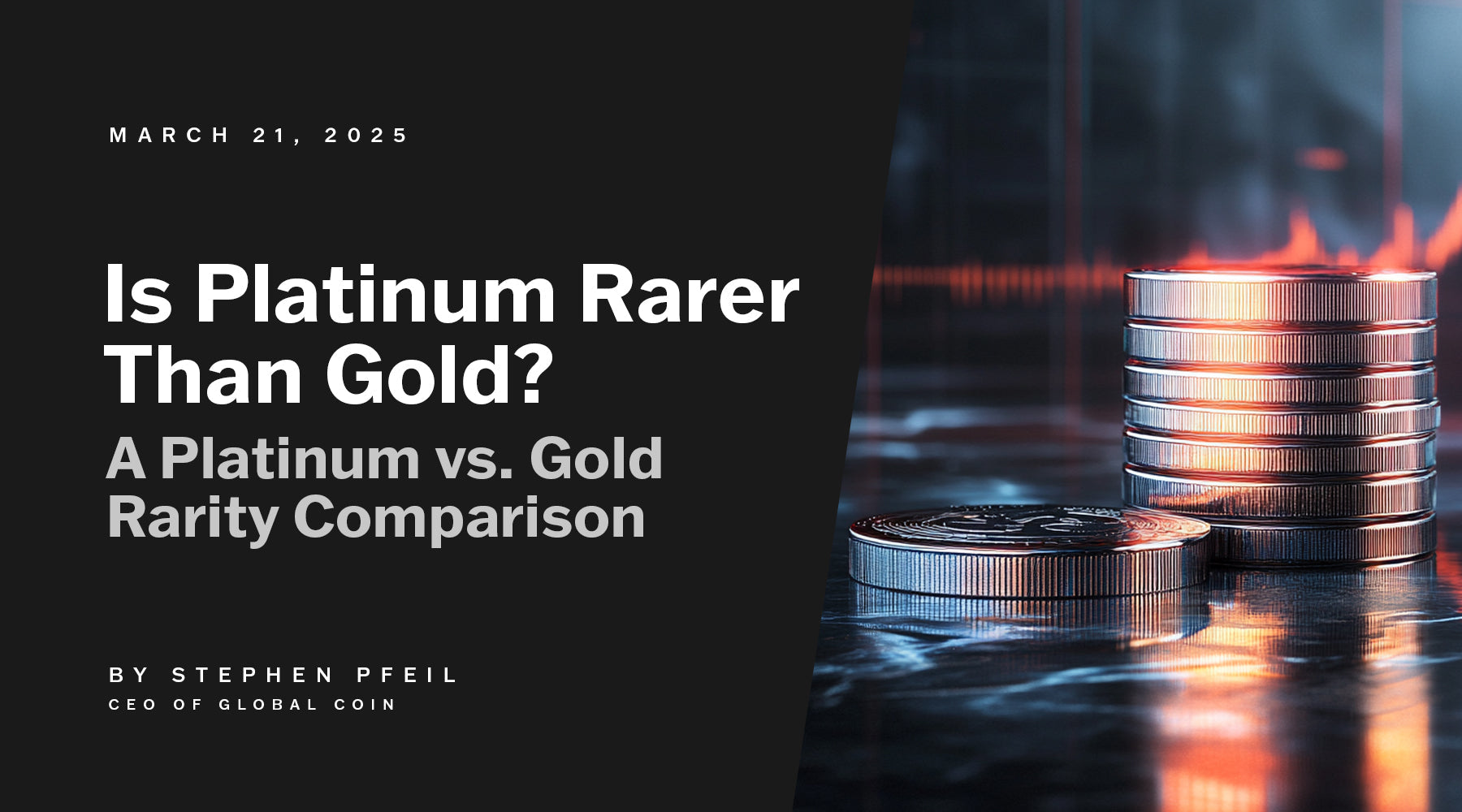
Disclaimer:
Global Coin is a dealer of precious metal coins and does not provide investment, financial, or legal advice. Any information provided in this content, including market commentary and insights, is for informational purposes only and should not be construed as investment advice. Investors should conduct their own due diligence and consult with a qualified financial professional before making any investment decisions. Gold and rare coin investments involve risks, and past performance is not indicative of future results.
My Platinum vs. Gold Rarity Comparison: Insights from a Numismatic Dealer
I’m Stephen Pfiel, a numismatic coin dealer with years of experience sourcing and selling precious metal coins, from gold Eagles to rare platinum proofs. Platinum and gold have always fascinated me—not just for their shine, but for their rarity, industrial roles, and investment potential. As of October 1, 2025, with gold spot prices at $3,882 per ounce and platinum at $1,586 per ounce, the market highlights platinum's undervaluation despite its scarcity. In this guide, I’ll explore whether platinum is rarer than gold, the implications of H.R. 9612 on U.S. Mint platinum coinage, and strategic factors like supply disruptions and green energy demand. Drawing from my career at Global Coin, I’ll equip you with insights to navigate these metals for your portfolio.
Disclaimer: I work with Global Coin, a dealer of precious metal coins. This content is for informational purposes only and isn’t investment, financial, or legal advice. Investors should conduct due diligence and consult a qualified financial professional. Gold and rare coin investments carry risks, and past performance doesn’t guarantee future results.
Strategic Insights into Platinum Coin Investments
Investing in precious metals like platinum coins goes beyond rarity—it requires understanding market trends, legislation, and supply chains. Platinum coins derive their intrinsic value from their metal content, rarity, and desirability, which are key factors for investors. At Global Coin, we help clients spot opportunities in a dynamic landscape. This comparison of platinum vs. gold rarity examines H.R. 9612’s potential impact on U.S. Mint production, mining challenges, and platinum’s rising role in green energy. With current spot prices—gold at $3,882/oz and platinum at $1,586/oz—these factors could reshape valuations, making informed decisions about platinum bullion products, such as coins and bars, essential for long-term success.
Is Platinum Rarer Than Gold?
From my experience handling both metals, platinum and gold are rare, but their scarcity plays out differently in the market. Platinum’s crustal abundance is about 5 parts per billion (ppb), edging out gold’s 4 ppb. However, global production figures reflect the true rarity of platinum in the earth's crust. Gold is mined at nearly 17 times the rate of platinum: around 3,300 metric tons annually for gold versus just 190 metric tons of platinum mined each year worldwide. This production gap highlights the rarity of platinum in terms of supply, despite similar geological scarcity. The rarity of platinum is further emphasized by the fact that most platinum mined comes from a few key regions, with South Africa dominating global production, followed by Russia and Canada. Native platinum, often found uncombined in alluvial deposits, adds to its allure as a precious metal. In fact, all the platinum ever mined is still far less than the total gold mined throughout history, underscoring the exceptional rarity of platinum.

What Makes a Metal Precious?
A precious metal must be a naturally occurring metallic element found in the Earth’s crust, rare, and valuable for aesthetics, industry, or both. Platinum, gold, and silver fit this mold; these metals share similar properties such as high density and resistance to corrosion. Platinum ore, embedded in nickel and copper deposits as sulfide, telluride, or arsenide forms, demands complex extraction, underscoring its rarity. Gold’s abundance disqualifies metals like copper, while aluminum lost its “precious” status through technological advances. In my dealings, this dynamic rarity drives platinum’s appeal, especially at today’s $1,586/oz spot price compared to gold’s $3,882/oz.
Exploring H.R. 9612 and the U.S. Mint’s Platinum Obligations
H.R. 9612, introduced by Rep. Matthew Rosendale on September 17, 2024, proposes banning platinum and palladium imports from Russia to support the U.S.’s sole platinum mine, Stillwater in Montana. Amid layoffs from Russian competition, the bill aims to bolster domestic mining. Crucially, U.S. Mint platinum Eagles must use domestic metal per enabling legislation—ruling out foreign imports. If passed, H.R. 9612 could strain the Mint’s supply, already reliant on limited U.S. output, potentially limiting production and elevating coin premiums. Changing market conditions, such as supply constraints and legislative impacts, can significantly influence platinum prices and availability.
This matters for collectors like my clients: constrained supply might mean fewer Eagles, boosting rarity and value. At current prices—platinum $1,586/oz vs. gold $3,882/oz—this could narrow platinum’s discount, making it a strategic buy.
Global Platinum Production
When it comes to global platinum production, the scale and complexity set this precious metal apart from gold and silver. The vast majority of platinum is mined in South Africa, which is responsible for over 70% of the world’s supply—a significant portion that underscores the country’s pivotal role in the platinum market. Other key producers include Russia and Canada, but their output pales in comparison to South Africa’s dominance.
Platinum mining is a demanding process, often involving deep underground operations and the extraction of platinum as a byproduct from nickel and copper ores. Unlike gold and silver, which are more widely distributed and easier to extract, platinum’s rarity in the earth’s crust and the technical challenges of its recovery make global platinum production a true feat of engineering. Each year, only about 190 metric tons of platinum are produced worldwide, a stark contrast to the thousands of tons of gold and silver mined annually.
The automotive industry is the largest consumer of platinum, relying on this metal for catalytic converters that help reduce harmful emissions from vehicles. As environmental regulations tighten and the world shifts toward cleaner technologies, platinum’s role in clean energy sectors—especially in fuel cells and hydrogen production—continues to expand. This growing industrial demand, combined with the limited global supply, ensures that platinum remains a highly valuable commodity among precious metals.
Supply Shock: Banning Russian Platinum’s Global Impact

Russia supplies about 11% of world platinum (behind South Africa’s 72%), so a U.S. ban via H.R. 9612 could create a supply shock that leads to higher prices for platinum. Alternative sources like Zimbabwe or North America might not fill the gap quickly, tightening markets. I’ve seen similar sanction talks spike platinum prices—palladium jumped 9.5% in a day on 2024 G7 rumors, with platinum following suit. South African mining stocks rose over 10% on reduced competition prospects.
Short-term, Russian metal might reroute via neutral countries, moderating spikes. Long-term, it exacerbates deficits: the World Platinum Investment Council (WPIC) notes consecutive shortfalls since 2023, worsened by South African power issues and low recycling. For platinum coin investors, this means higher melt values (tied to $1,586/oz spot) and potential mintage limits, increasing numismatic premiums. Investors should closely monitor platinum prices in response to changing supply dynamics.
Platinum Group Metals (PGMs) and Mining Challenges
PGMs—platinum, palladium, iridium, osmium, rhodium, ruthenium—are rare, durable, and versatile. Platinum mining is labor-intensive, using shaft, decline, or room-and-pillar methods in complex ores. South Africa, Russia, and Zimbabwe dominate, but costs and geology highlight platinum’s scarcity. In my view, at $1,586/oz versus gold’s $3,882/oz, platinum’s extraction hurdles make it a value play.
The U.S. Mint and Platinum Coinage
The U.S. Mint produces limited edition platinum coins that are highly sought after by collectors, such as the American Platinum Eagle. The American Platinum Eagle stands out among platinum coins for its unique annual design changes, high purity (99.95%), and iconic status since its introduction in 1997. Limited mintages and domestic sourcing enhance exclusivity. I’ve sold these to clients who prize their beauty and potential appreciation—especially now, with platinum at $1,586/oz. Unlike gold’s robust production, platinum’s constraints could make future American Platinum Eagles scarcer, driving demand. These coins also hold historical significance for collectors and investors, adding to their appeal and long-term value.

Platinum Compared to Other Precious Metals
Platinum stands out among precious metals for its exceptional rarity, unique properties, and broad range of applications. While gold and silver have long been the benchmarks for value and tradition, platinum is actually rarer than gold, with only about 5 parts per billion in the earth’s crust compared to gold’s 4 parts per billion and silver’s 75 parts per billion. This scarcity, combined with the challenges of extraction, makes platinum a highly prized and sought-after metal precious to both collectors and investors.
What truly sets platinum apart from other precious metals is its high melting point, remarkable corrosion resistance, and unparalleled catalytic capabilities. These attributes make platinum indispensable in industries ranging from jewelry and coinage to advanced industrial and clean energy applications. As a result, platinum offers a level of durability and versatility that few other metals can match.
In the platinum market, prices are influenced by a unique blend of industrial demand, supply constraints, and market trends. While gold and silver are often seen as safe-haven assets, platinum’s value is closely tied to its use in cutting-edge technologies and clean energy sectors. For investors, platinum represents a unique asset—one that not only brings significant value and timeless elegance to investment portfolios but also offers the potential for long-term value appreciation as global demand continues to rise. Whether compared to gold, silver, or other precious metals, platinum remains a highly valuable and highly prized addition to any collection or portfolio.
Platinum’s Unique Characteristics
Platinum’s durability, corrosion resistance, and high melting point (1,768°C) set it apart. Pure platinum (99.95% purity) is often used in high-end jewelry pieces, valued for both its rarity and exceptional quality. Alloying improves malleability for jewelry, where its hypoallergenic shine and remarkable aesthetic appeal—marked by visual beauty and elegance—endure. In high-temp applications like aerospace, it excels. At $1,586/oz—half gold’s $3,882/oz—these traits make platinum undervalued for industrial and luxury uses. Platinum's timeless elegance ensures its continued desirability in both luxury and industrial markets.
The Green Energy Transition and Platinum Demand
Platinum's role as a key component in clean energy and automotive technologies is critical, making it indispensable for modern industry. Platinum’s role in catalytic converters cuts emissions, vital as standards tighten, and its industrial applications extend across various industries, including electronics and medical devices, due to its corrosion resistance and high melting point. In fuel cells, it catalyzes hydrogen to electricity, fueling green tech—a sector that is gaining traction as hydrogen fuel cell technology becomes more widely adopted. WPIC forecasts rising demand here, offsetting any EV shift from autos. With platinum at $1,586/oz, this positions it for growth against gold’s $3,882/oz stability.

Platinum Jewelry and Collectibles
Platinum is highly prized in high end jewelry for its rarity and elegance, making it a top choice for luxury pieces. Exclusive platinum bars are sought after by collectors and investors for their rarity and premium status. Platinum collectibles—including coins, bars, and vintage jewelry—are valuable assets for both collectors and investors. Vintage jewelry, as a unique subset of platinum collectibles, stands out for its rarity, uniqueness, and timeless appeal. I’ve seen clients build sets valuing platinum’s durability at $1,586/oz, far below gold’s $3,882/oz, for heirloom potential. As a luxury metal, platinum is valued for its exclusivity and prestige.
The Royal Mint’s Perspective
The Royal Mint crafts premium platinum coins, celebrating the metal’s beauty. Their products offer secure investment and collectible appeal. At current prices, platinum’s $1,586/oz makes Royal Mint pieces a smart diversification from gold’s $3,882/oz.
Platinum’s Role in Industry and Technology
Beyond autos (35-40% demand), the automotive sector is a major consumer of platinum, primarily for catalytic converters that reduce emissions. Platinum also aids aerospace (jet components) and medicine, not only in chemotherapy drugs like cisplatin but also in the production of high-precision medical instruments due to its corrosion resistance and stability. In the electronics industry, platinum is essential for manufacturing electrical contacts and connectors because of its high melting point and resistance to corrosion. Its catalytic prowess ensures relevance. At $1,586/oz, industrial demand—driven by these broad industrial applications across the automotive sector, electronics industry, and medical instruments—supports platinum’s edge over gold’s $3,882/oz investment focus.
The Royal Mint’s Perspective
The Royal Mint has a long history of producing high-quality platinum coins and bullion products. As a leading mint, the Royal Mint recognizes the value and rarity of platinum, offering a range of platinum products that cater to both collectors and investors. The Royal Mint’s platinum coins and bullion products are crafted from the finest platinum, designed to showcase the metal’s unique properties and beauty.
From the Royal Mint’s perspective, platinum is a highly valuable and sought-after precious metal that offers a unique investment opportunity. The mint’s platinum products provide investors with a secure and reliable way to invest in platinum, while collectors prize these coins and bullion products for their rarity and aesthetic appeal. The Royal Mint’s commitment to quality and craftsmanship ensures that its platinum offerings stand out in the market.
Platinum’s Price Trend: Beyond the Initial Spike
Sanctions like H.R. 9612 could spike prices short-term, but stabilization follows as routes adapt—seen in 2022 London bans. However, changing market conditions, such as supply constraints and demand recovery, play a significant role in platinum price fluctuations and can lead to short-term volatility or long-term trends. Yet, fundamentals favor upside: WPIC deficits, auto substitution (platinum for pricier palladium), and hydrogen growth. At $1,586/oz (vs. gold $3,882/oz), platinum’s historical discount signals appreciation potential. Watch the platinum-to-gold ratio; a rise could mean convergence.
Economic strength boosts industrial demand, while EVs pose long-term risks—but hybrids persist into the 2030s. Platinum’s green tech offset makes it resilient. Platinum continues to attract investor attention due to its enduring industrial and collectible value, and it remains one of the most sought after precious metals for both industrial and investment purposes.
Beyond the initial spike, investors should consider how the market might stabilize and trend. History suggests that sanctions-driven price jumps can be followed by some cooling off once the immediate panic passes. For example, when London markets sanctioned Russian platinum and palladium in 2022, prices spiked but did not sustain at peaks after alternative supply routes emerged. So we might expect volatility: sharp moves on news, followed by partial pullbacks.
What Platinum Investors Should Consider Now
From my experience:
-
Monitor Legislation: Track H.R. 9612; passage could tighten U.S. supply, lifting prices from $1,586/oz.
-
Supply vs. Spikes: Domestic focus aids Mint production but raises costs—bullish for coin values.
-
Diversify: Pair platinum with gold ($3,882/oz) for balance; platinum shines in industrial booms.
-
Industrial Indicators: Follow auto sales and palladium trends for substitution cues.
Platinum wire’s tech uses (labs, thermometers) add versatility.
Navigating the Future of Platinum Investments
Platinum’s future hinges on demand (industry, green tech) and supply tightness. At $1,586/oz, it offers secure long-term growth versus gold’s $3,882/oz. Stay informed on trends; Global Coin’s expertise helps capitalize on appreciation.
Conclusion: Platinum vs. Gold—Rarity and Opportunity
H.R. 9612 could constrict Russian supply (11% global), amplifying deficits and supporting platinum from $1,586/oz. For U.S. Mint coins, it reinforces domestic reliance, potentially scarcer Eagles. With strong fundamentals—deficits, undervaluation vs. gold’s $3,882/oz—platinum tilts bullish, though volatility looms.
As a dealer, I see platinum as a diversification gem. Monitor politics and industry; informed strategies turn uncertainty into gains. At Global Coin, we provide premium platinum to seize these opportunities.
Call to Action: Explore platinum vs. gold with Global Coin—visit shopglobalcoin.com for curated coins and insights.
Frequently Asked Questions
Is platinum rarer than gold? Yes, in market supply—mined 17x less, despite similar crustal abundance—making it effectively scarcer at $1,586/oz vs. gold’s $3,882/oz.
How does H.R. 9612 affect platinum coins? It bans Russian imports, tightening U.S. supply for Mint Eagles, potentially raising values from $1,586/oz spot.
Why invest in platinum now? Deficits, green demand, and undervaluation vs. gold ($3,882/oz) signal upside at $1,586/oz.
Platinum vs. gold: Which is better? Platinum for industrial growth; gold for stability—diversify both for balance.
Related Articles
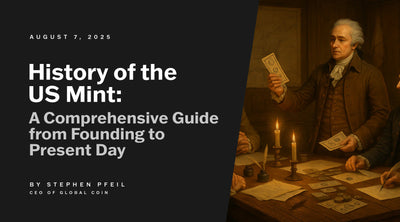
History of US Mint: A Comprehensive Guide from Founding to Present Day
The United States Mint, often simply called the U.S. Mint, stands as a cornerstone of American e...
Discover More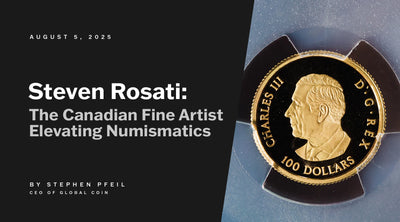
Steven Rosati: The Canadian Fine Artist Elevating Numismatics
As the founder of Global Coin and a numismatist with over 20 years of experience, I’ve handled co...
Discover More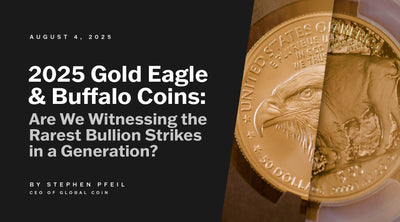
2025 Gold Eagle and Buffalo Coins: Are We Witnessing the Rarest Bullion Strikes in a Generation?
In a world where gold is more than just a commodity—where it’s a legacy asset, a hedge against ...
Discover More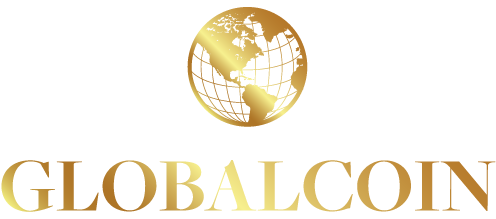

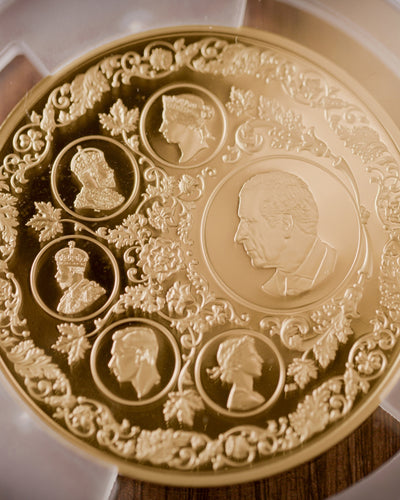
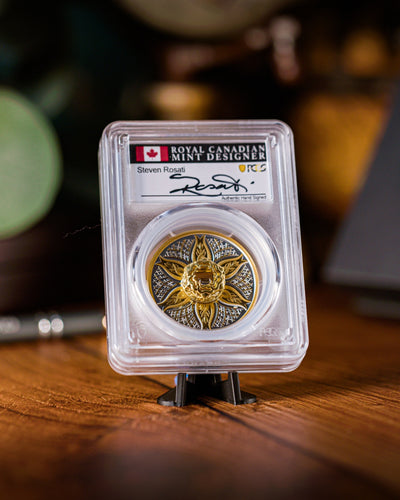
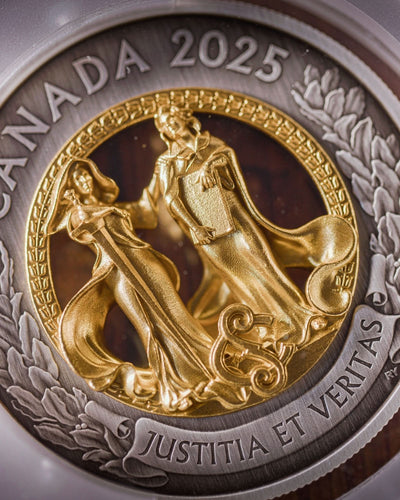
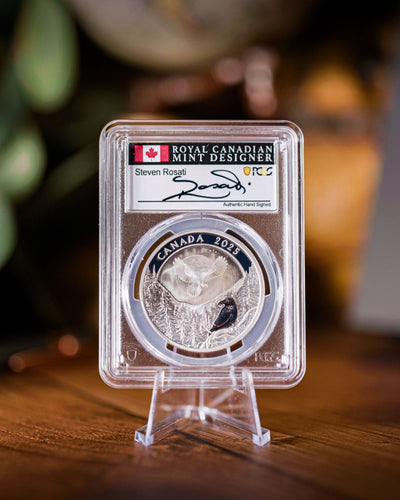
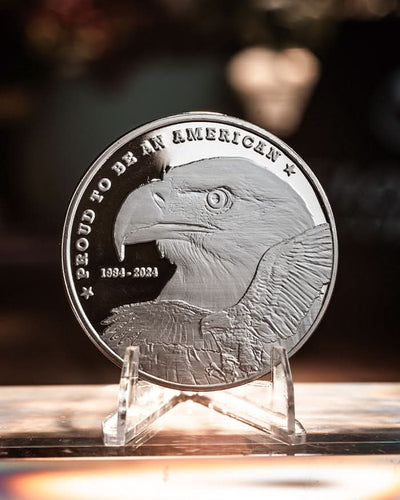
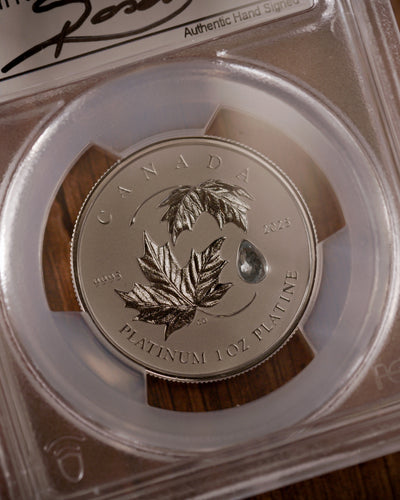
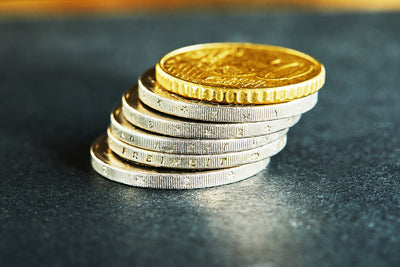
Leave a comment
This site is protected by hCaptcha and the hCaptcha Privacy Policy and Terms of Service apply.